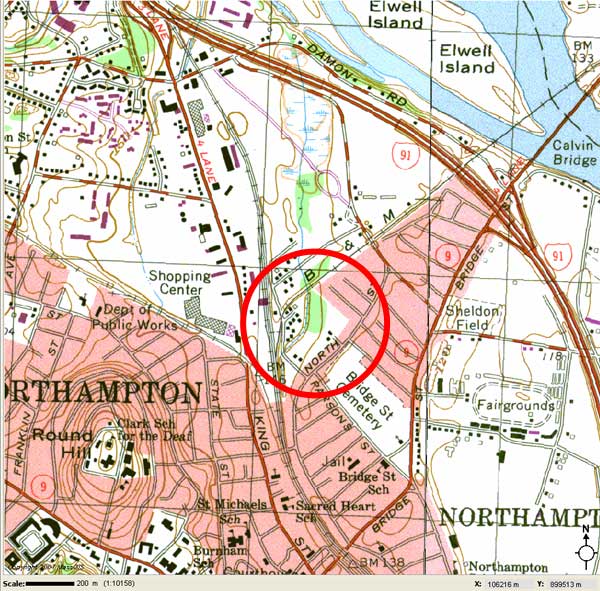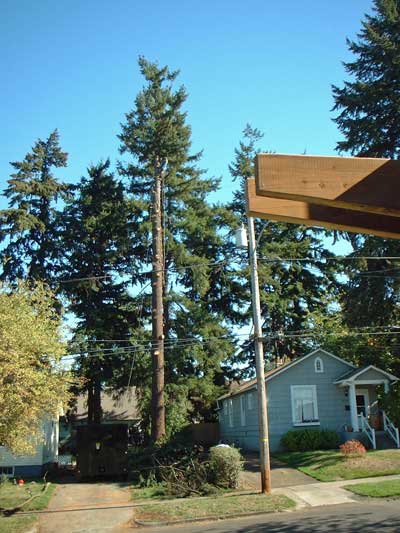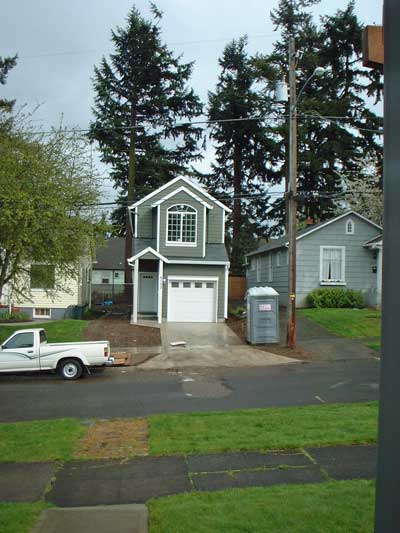Virginia Schulman calls our attention to the following article from The Boston Globe, which originally appeared on 1/2/09. Evidence is piling up that greenspace within a city is vital for mental health. A few excerpts:
How the city hurts your brain
…And what you can do about it…scientists have begun to examine how the city affects the brain, and the results are chastening. Just being in an urban environment, they have found, impairs our basic mental processes. After spending a few minutes on a crowded city street, the brain is less able to hold things in memory, and suffers from reduced self-control…
One of the main forces at work is a stark lack of nature, which is surprisingly beneficial for the brain. Studies have demonstrated, for instance, that hospital patients recover more quickly when they can see trees from their windows, and that women living in public housing are better able to focus when their apartment overlooks a grassy courtyard. Even these fleeting glimpses of nature improve brain performance, it seems, because they provide a mental break from the urban roil…
A city is so overstuffed with stimuli that we need to constantly redirect our attention so that we aren’t distracted by irrelevant things, like a flashing neon sign…
Natural settings, in contrast, don’t require the same amount of cognitive effort…
Natural settings are full of objects that automatically capture our attention, yet without triggering a negative emotional response — unlike, say, a backfiring car. The mental machinery that directs attention can relax deeply, replenishing itself…
City life can also lead to loss of emotional control. Kuo and her colleagues found less domestic violence in the apartments with views of greenery. These data build on earlier work that demonstrated how aspects of the urban environment, such as crowding and unpredictable noise, can also lead to increased levels of aggression. A tired brain, run down by the stimuli of city life, is more likely to lose its temper…
While people have searched high and low for ways to improve cognitive performance, from doping themselves with Red Bull to redesigning the layout of offices, it appears that few of these treatments are as effective as simply taking a walk in a natural place…
See also:
New York Post: “Crying out loud!” (10/27/10)
Noise in 98 percent of Manhattan’s public space exceeds healthy levels, says a study co-authored by Columbia University researchers to be released today.
Honking cars or quarreling neighbors raise our stress, but background noise like truck traffic that New Yorkers take in stride may be even worse, said Robyn Gershon, a Columbia professor.
“Noises on the street can be stressful and increase your blood pressure,” said Gershon.

State Offers Funds to Help Conserve North Street Woods
MA Secy of Energy and Environmental Affairs: Urban Parks Deserve Protection as do Habitat Reserves and Working Landscapes
[Ian Bowles:] We need smart land conservation along with smart growth. That’s why, going forward, the commonwealth is going to concentrate its land protection efforts on three priorities, which complement the administration’s smart-growth goals:
- Urban Parks: For smart growth to succeed, urban life needs to be attractive. From a land perspective, the best thing we can do to improve urban living is to make sure there are beautiful parks within walking distance of every urban dweller. So we plan to create visionary urban parks in 10 to 15 cities in neighborhoods that don’t have them, and to significantly [improve] parks in all 51 Massachusetts cities over the next four years…
USA Today: “Push for urban parkland takes root”
U.S. News to Retirees: Choose a locale with plenty of greenspace
UMass Press: “Natural Land: Preserving and Funding Open Space”
Preserving areas of nature, open space, and trees and other vegetation can have psychological as well as physical health benefits for local residents. There is a growing body of research which points to the power of nature to restore people from the stress of modern life, including mental fatigue (Kaplan, Kaplan, and Ryan 1998; Frumkin 2001).
Greening Smart Growth: The Sustainable Sites Initiative
The presence of natural elements has several implications for personal and community security. Shared green spaces, particularly those with trees, provide settings for people to interact and strengthen social ties. Residential areas with green surroundings are associated with greater social cohesion in neighborhoods, and neighbors with stronger social ties are more likely to monitor local activity, intervene if problem behaviors occur,[48] and defend their neighborhoods against crime.[49] Residents of buildings with greater tree and grass cover report fewer incidences of vandalism, graffiti, and litter than counterparts in more barren buildings.[50] Likewise, a study comparing police reports of crime and extent of tree and grass cover found that the greener a building’s surroundings, the fewer total crimes were reported.[51]
Seeing Like a State: Planning Gone Awry in the 20th Century
Cities tend to be complex organisms, Scott observes, so planners are constantly tempted to try to simplify their task:
Once the desire for comprehensive urban planning is established, the logic of uniformity and regimentation is well-nigh inexorable. Cost effectiveness contributes to this tendency… [E]very concession to diversity is likely to entail a corresponding increase in administrative time and budgetary cost… (p.141-142)
In Northampton, the simplification du jour appears to be a drive to segregate our open space to the periphery, while weakening greenspace preservation in the more urban districts where it is already scarce.
Photo Essay: 10 Reasons People Like Trees Around Them; Will the Sustainable Northampton Plan Put Urban Trees at Risk?
…trees around homes in Northampton’s built-up areas (where perhaps half the population lives) may be threatened by proposals in the Sustainable Northampton Plan, which encourages city officials to “implement ideas for maximizing density on small lots” (p.14) and “consider amending zero lot line single family home to eliminate 30′ side yard setback” (p.67).
If you walk down North Street, imagine most trees between houses gone and replaced with a near-solid wall of housing. See the articles below, and decide if that’s growth that’s smart, or growth that smarts…
“Planning for Trees” by Henry Arnold, Planning Commissioners Journal, January/February 1992
A recent survey by the American Forestry Association of twenty American cities found that, on average, only one tree is planted for every four removed…
Our urban centers need to become more attractive to help counter the continuation of a sprawl pattern of development. If the appeal of low density, widely scattered development is derived from the need to be closer to nature, then making trees an integral part of the urban habitat will help make our town and city centers more desirable places to live and work. It is profoundly important to see this linkage between making cities and towns more “liveable” and stemming the continued spread of scattered development across the countryside…
The Ecological Cities Project: Greenspace in “The Humane Metropolis”
A metropolis (i.e., metro region or citistate) is considered green if it fosters humans’ connections to the natural world — an idea Anne Whiston Spirn promoted in her seminal 1984 book The Granite Garden. Spirn rejected the idea — easily absorbed if one watches too many “concrete jungle” films, or even televised nature documentaries — that the natural world begins beyond the urban fringe. “Nature in the city,” she wrote, “must be cultivated, like a garden, rather than ignored or subdued.”
Rutherford Platt, “Regreening the Metropolis: Pathways to More Ecological Cities”
…cities and metropolitan areas, now too large to conveniently escape, must themselves be viewed as incorporating both built and unbuilt environments… And into the bargain, the urban environment will prove to be more habitable, more sustainable, more “ecological”…
Berkeley, California: Cautions on Infill
In 1990, 60 percent of New Yorkers said they would live somewhere else if they could, and in 2000, 70 percent of urbanites in Britain felt the same way. Many suburbanites commute hours every day just to have “a home, a bit of private space, and fresh air.”
Irony of Infill: You Have to Drive to Enjoy Nature
Downstreet.net: “Despite Tree City USA Honor Northampton Planting Lags”
Each year, the city removes more dead or hazardous trees than it replaces, leaving a net decrease in the population of our mature shade trees…
Portland: A Photo Tour of Spiraling Densification

76th before

76th after
In 76th before and 76th after you see a skinny house built in the empty space between two other houses…